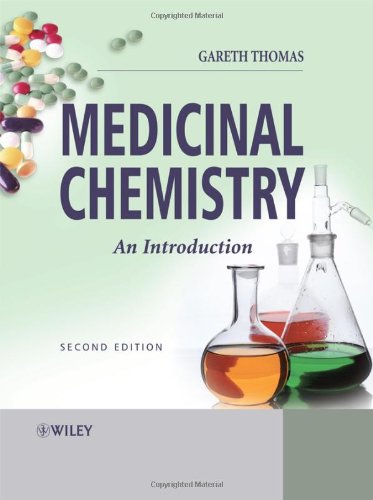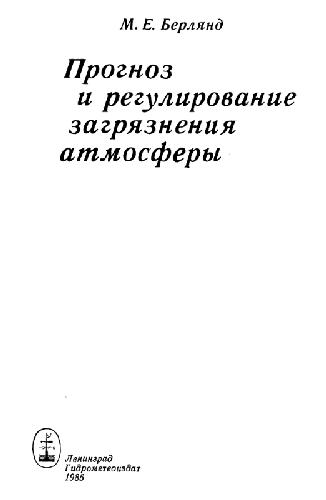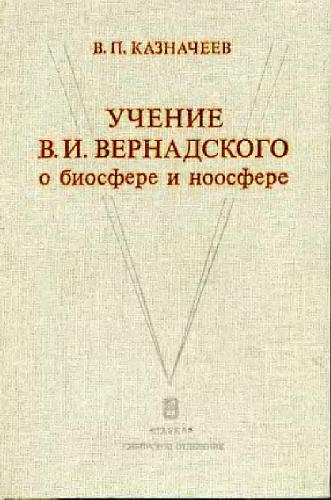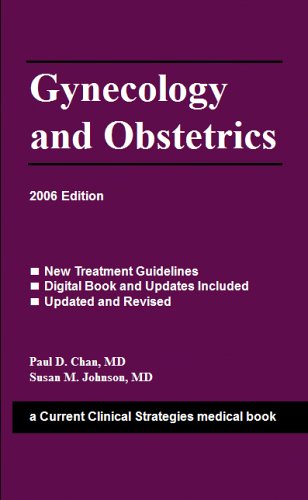Gareth Thomas0470025972, 9780470025970, 9780470518304
Written in an accessible style, Medicinal Chemistry: An Introduction, Second Edition carefully explains fundamental principles, assuming little in the way of prior knowledge. The book focuses on the chemical principles used for drug discovery and design covering physiology and biology where relevant. It opens with a broad overview of the subject with subsequent chapters examining topics in greater depth.
From the reviews of the First Edition:
“It contains a wealth of information in a compact form” ANGEWANDTE CHEMIE, INTERNATIONAL EDITION
“Medicinal Chemistry is certainly a text I would chose to teach from for undergraduates. It fills a unique niche in the market place.” PHYSICAL SCIENCES AND EDUCATIONAL REVIEWS
Table of contents :
Medicinal Chemistry……Page 2
Contents……Page 8
Preface to the First Edition……Page 18
Preface to the Second Edition……Page 20
Acknowledgements……Page 22
Abbreviations……Page 24
1.2 What are drugs and why do we need new ones?……Page 28
1.3 Drug discovery and design: a historical outline……Page 30
1.3.1 The general stages in modern-day drug discovery and design……Page 34
1.4.1 Bioavailability……Page 36
1.4.3 Structure……Page 37
1.4.4 Stability……Page 38
1.5 Sources of leads and drugs……Page 41
1.5.2 Plant sources……Page 42
1.5.3 Marine sources……Page 44
1.5.4 Microorganisms……Page 45
1.5.6 Compound collections, data bases and synthesis……Page 47
1.6 Methods and routes of administration: the pharmaceutical phase……Page 48
1.7 Introduction to drug action……Page 51
1.7.1 The pharmacokinetic phase (ADME)……Page 52
1.7.2 The pharmacodynamic phase……Page 59
1.8.1 Chemical structure……Page 60
1.8.3 Physiological classification……Page 61
1.9 Questions……Page 62
2.2 Structure……Page 64
2.3.1 Structurally rigid groups……Page 65
2.3.2 Conformation……Page 66
2.3.3 Configuration……Page 68
2.4.1 Solubility and the physical nature of the solute……Page 71
2.5 Solutions……Page 73
2.6 The importance of water solubility……Page 74
2.7 Solubility and the structure of the solute……Page 76
2.8 Salt formation……Page 77
2.9.1 The type of group……Page 79
2.9.3 The position of the water solubilising group……Page 80
2.9.4 Methods of introduction……Page 81
2.10.2 Colloidal solutions……Page 86
2.10.3 Emulsions……Page 87
2.11 The effect of pH on the solubility of acidic and basic drugs……Page 88
2.12 Partition……Page 90
2.12.1 Practical determination of partition coefficients……Page 92
2.13 Surfactants and amphiphiles……Page 93
2.13.1 Drug solubilisation……Page 96
2.13.2 Mixed micelles as drug delivery systems……Page 98
2.14 Questions……Page 99
3.1 Introduction……Page 102
3.2 Structure–activity relationship (SAR)……Page 103
3.3.1 Changing the number of methylene groups in chains and rings……Page 104
3.3.3 Introduction or removal of a ring system……Page 105
3.4 Introduction of new substituents……Page 107
3.4.1 Methyl groups……Page 108
3.4.2 Halogen groups……Page 110
3.4.4 Basic groups……Page 111
3.4.6 Thiols, sulphides and other sulphur groups……Page 112
3.5 Changing the existing substituents of a lead……Page 113
3.6 Case study: a SAR investigation to discover potent geminal bisphosphonates……Page 114
3.7 Quantitative structure–activity relationship (QSAR)……Page 117
3.7.1 Regression analysis……Page 120
3.7.2 The lipophilic parameters……Page 121
3.7.3 Electronic parameters……Page 126
3.7.4 Steric parameters……Page 129
3.8 Questions……Page 137
4.1 Introduction……Page 140
4.1.1 Models……Page 141
4.1.2 Molecular modelling methods……Page 142
4.1.3 Computer graphics……Page 143
4.2 Molecular mechanics……Page 144
4.2.1 Creating a molecular model using molecular mechanics……Page 147
4.3 Molecular dynamics……Page 150
4.4 Quantum mechanics……Page 151
4.5 Docking……Page 154
4.5.1 De novo design……Page 155
4.6 Comparing three-dimensional structures by the use of overlays……Page 157
4.6.1 An example of the use of overlays……Page 159
4.7.1 High-resolution X-ray crystallography or NMR……Page 160
4.7.2 Analysis of the structures of different ligands……Page 161
4.8 Modelling protein structures……Page 162
4.9 Three-dimensional QSAR……Page 163
4.9.1 Advantages and disadvantages……Page 167
4.10 Other uses of computers in drug discovery……Page 168
4.11 Questions……Page 170
5.1 Introduction……Page 172
5.1.1 The design of combinatorial syntheses……Page 174
5.2 The solid support method……Page 175
5.2.1 General methods in solid support combinatorial chemistry……Page 177
5.2.2 Parallel synthesis……Page 179
5.2.3 Furka’s mix and split technique……Page 182
5.3.1 Sequential chemical tagging……Page 184
5.3.2 Still’s binary code tag system……Page 187
5.4 Combinatorial synthesis in solution……Page 188
5.4.1 Parallel synthesis in solution……Page 189
5.4.2 The formation of libraries of mixtures……Page 190
5.4.4 Libraries produced using dendrimers as soluble supports……Page 191
5.4.5 Libraries formed using fluorocarbon reagents……Page 192
5.4.6 Libraries produced using resin-bound scavenging agents……Page 193
5.4.8 Resin capture of products……Page 195
5.5 Deconvolution……Page 196
5.6 High-throughput screening (HTS)……Page 197
5.6.1 Biochemical assays……Page 198
5.6.3 Hits and hit rates……Page 200
5.7 Automatic methods of library generation and analysis……Page 201
5.8 Questions……Page 202
6.1 Introduction……Page 204
6.2 Bioassays……Page 206
6.2.1 Screening tests……Page 207
6.2.2 Monitoring tests……Page 210
6.3 Dereplication……Page 212
6.4 Structural analysis of the isolated substance……Page 213
6.5 Active compound development……Page 215
6.6 Extraction procedures……Page 216
6.6.1 General considerations……Page 217
6.6.2 Commonly used methods of extraction……Page 218
6.7 Fractionation methods……Page 222
6.7.1 Liquid–liquid partition……Page 223
6.7.2 Chromatographic methods……Page 226
6.7.4 Distillation……Page 227
6.8 Case history: the story of Taxol……Page 229
6.9 Questions……Page 233
7.1 Introduction……Page 234
7.2 The plasma membrane……Page 235
7.2.1 Lipid components……Page 236
7.2.2 Protein components……Page 238
7.2.4 Similarities and differences between plasma membranes in different cells……Page 240
7.2.5 Cell walls……Page 241
7.2.6 Bacterial cell exterior surfaces……Page 244
7.2.8 Virus……Page 245
7.2.10 Human skin……Page 246
7.3.1 Osmosis……Page 247
7.3.3 Passive diffusion……Page 248
7.3.5 Active transport……Page 250
7.3.6 Endocytosis……Page 251
7.4 Drug action that affects the structure of cell membranes and walls……Page 252
7.4.1 Antifungal agents……Page 253
7.4.2 Antibacterial agents (antibiotics)……Page 257
7.4.3 Local anaesthetics……Page 271
7.5 Questions……Page 276
8.1 Introduction……Page 278
8.2 The chemical nature of the binding of ligands to receptors……Page 279
8.3 Structure and classification of receptors……Page 281
8.4 General mode of operation……Page 283
8.4.1 Superfamily Type 1……Page 286
8.4.2 Superfamily Type 2……Page 287
8.4.3 Superfamily Type 3……Page 290
8.4.4 Superfamily Type 4……Page 291
8.5 Ligand–response relationships……Page 292
8.5.1 Experimental determination of ligand concentration–response curves……Page 293
8.5.2 Agonist concentration–response relationships……Page 294
8.5.3 Antagonist concentration–receptor relationships……Page 295
8.5.4 Partial agonists……Page 298
8.6.1 Clark’s occupancy theory……Page 299
8.6.2 The rate theory……Page 304
8.6.3 The two-state model……Page 305
8.7.1 Agonists……Page 306
8.7.2 Antagonists……Page 308
8.7.3 Citalopram, an antagonist antidepressant discovered by a rational approach……Page 309
8.7.4 β-Blockers……Page 312
8.8 Questions……Page 316
9.1 Introduction……Page 318
9.2 Classification and nomenclature……Page 320
9.3 Active sites and catalytic action……Page 322
9.3.1 Allosteric activation……Page 324
9.4.2 Allosteric control……Page 325
9.5 The specific nature of enzyme action……Page 327
9.7 The general physical factors affecting enzyme action……Page 329
9.8.1 Single substrate reactions……Page 330
9.8.2 Multiple substrate reactions……Page 332
9.9 Enzyme inhibitors……Page 333
9.9.1 Reversible inhibitors……Page 334
9.9.2 Irreversible inhibition……Page 339
9.10 Transition state inhibitors……Page 345
9.11 Enzymes and drug design: some general considerations……Page 347
9.12.1 Sulphonamides……Page 348
9.12.2 Captopril and related drugs……Page 350
9.12.3 Statins……Page 353
9.13 Enzymes and drug resistance……Page 356
9.13.1 Changes in enzyme concentration……Page 357
9.13.3 Changes in the structure of the enzyme……Page 358
9.15 Questions……Page 359
10.1 Introduction……Page 362
10.2 Deoxyribonucleic acid (DNA)……Page 363
10.2.1 Structure……Page 364
10.3 The general functions of DNA……Page 365
10.4 Genes……Page 366
10.5 Replication……Page 367
10.6 Ribonucleic acid (RNA)……Page 368
10.7 Messenger RNA (mRNA)……Page 369
10.8 Transfer RNA (tRNA)……Page 370
10.10.1 Activation……Page 372
10.10.2 Initiation……Page 373
10.10.3 Elongation……Page 374
10.11.1 Prokaryotic cells……Page 375
10.12 Bacterial protein synthesis inhibitors (antimicrobials)……Page 377
10.12.1 Aminoglycosides……Page 378
10.12.2 Chloramphenicol……Page 382
10.12.3 Tetracyclines……Page 383
10.12.4 Macrolides……Page 386
10.12.5 Lincomycins……Page 387
10.13.1 Antimetabolites……Page 389
10.13.2 Enzyme inhibitors……Page 395
10.13.3 Intercalating agents……Page 399
10.13.4 Alkylating agents……Page 401
10.13.5 Antisense drugs……Page 404
10.13.6 Chain cleaving agents……Page 406
10.14.1 Structure and replication……Page 407
10.14.2 Classification……Page 408
10.14.3 Viral diseases……Page 410
10.14.4 Antiviral drugs……Page 411
10.15.1 Gene cloning……Page 416
10.15.2 Medical applications……Page 419
10.16 Questions……Page 428
11.1 Introduction……Page 430
11.1.2 Drug regimens……Page 432
11.1.3 The importance of pharmacokinetics in drug discovery……Page 433
11.2 Drug concentration analysis and its therapeutic significance……Page 434
11.3 Pharmacokinetic models……Page 436
11.4 Intravascular administration……Page 438
11.4.1 Distribution……Page 439
11.5 Extravascular administration……Page 452
11.5.1 Dissolution……Page 455
11.5.2 Absorption……Page 456
11.5.3 Single oral dose……Page 457
11.5.4 The calculation oftmax andCmax……Page 460
11.5.5 Repeated oral doses……Page 461
11.7 Extrapolation of animal experiments to humans……Page 462
11.8 Questions……Page 463
12.1.1 The stereochemistry of drug metabolism……Page 466
12.1.2 Biological factors affecting metabolism……Page 467
12.2 Secondary pharmacological implications of metabolism……Page 470
12.2.3 Metabolites with a dissimilar activity to the drug……Page 471
12.3 Sites of action……Page 472
12.4.1 Oxidation……Page 473
12.4.3 Hydrolysis……Page 475
12.5 Examples of Phase I metabolic reactions……Page 476
12.6 Phase II metabolic routes……Page 481
12.7 Pharmacokinetics of metabolites……Page 484
12.8 Drug metabolism and drug design……Page 485
12.9 Prodrugs……Page 487
12.9.1 Bioprecursor prodrugs……Page 488
12.9.2 Carrier prodrugs……Page 489
12.9.3 Photoactivated prodrugs……Page 491
12.9.4 The design of carrier prodrug systems for specific purposes……Page 492
12.10 Questions……Page 502
13.1 Introduction……Page 504
13.2 The shapes and structures of complexes……Page 505
13.2.1 Ligands……Page 506
13.2.4 Metal clusters……Page 510
13.3.1 Affinity and equilibrium constants……Page 512
13.3.2 Hard and soft acids and bases……Page 514
13.4 The general roles of metal complexes in biological processes……Page 515
13.5.1 Metal poisoning……Page 518
13.5.2 Anticancer agents……Page 521
13.5.3 Antiarthritics……Page 524
13.5.4 Antimicrobial complexes……Page 525
13.5.5 Photoactivated metal complexes……Page 526
13.7 Questions……Page 528
14.2 The structure of nitric oxide……Page 530
14.3 The chemical properties of nitric oxide……Page 531
14.3.1 Oxidation……Page 532
14.3.2 Salt formation……Page 533
14.3.4 Reaction as an oxidising agent……Page 534
14.3.6 Nitric oxide complexes with iron……Page 535
14.3.7 The chemical properties of nitric oxide complexes……Page 537
14.3.8 The chemistry of related compounds……Page 539
14.4 The cellular production and role of nitric oxide……Page 541
14.4.1 General mode of action……Page 543
14.4.3 Metabolism……Page 545
14.5.1 The role of nitric oxide in the cardiovascular system……Page 546
14.5.2 The role of nitric oxide in the nervous system……Page 547
14.5.4 Nitric oxide and impotence……Page 549
14.5.5 Nitric oxide and the immune system……Page 550
14.6.1 Compounds that reduce nitric oxide generation……Page 551
14.6.2 Compounds that supply nitric oxide……Page 553
14.7 Questions……Page 556
15.1 Introduction……Page 558
15.2.3 The overall design……Page 559
15.2.4 The use of protecting groups……Page 560
15.3 Asymmetry in syntheses……Page 561
15.3.2 The use of stereoselective reactions to produce stereogenetic centres……Page 562
15.3.3 General methods of asymmetric synthesis……Page 568
15.3.4 Methods of assessing the purity of stereoisomers……Page 574
15.4.1 An introduction to the disconnection approach……Page 575
15.4.2 Convergent synthesis……Page 581
15.5 Partial organic synthesis of xenobiotics……Page 583
15.6 Questions……Page 584
16.1 Introduction……Page 586
16.2 Chemical development……Page 587
16.2.1 Chemical engineering issues……Page 588
16.2.2 Chemical plant: health and safety considerations……Page 589
16.2.4 A case study……Page 590
16.3 Pharmacological and toxicological testing……Page 592
16.4 Drug metabolism and pharmacokinetics……Page 596
16.6 Production and quality control……Page 597
16.7 Patent protection……Page 598
16.8 Regulation……Page 599
16.9 Questions……Page 600
Selected further reading……Page 602
Answers to questions……Page 606
Index……Page 628







Reviews
There are no reviews yet.